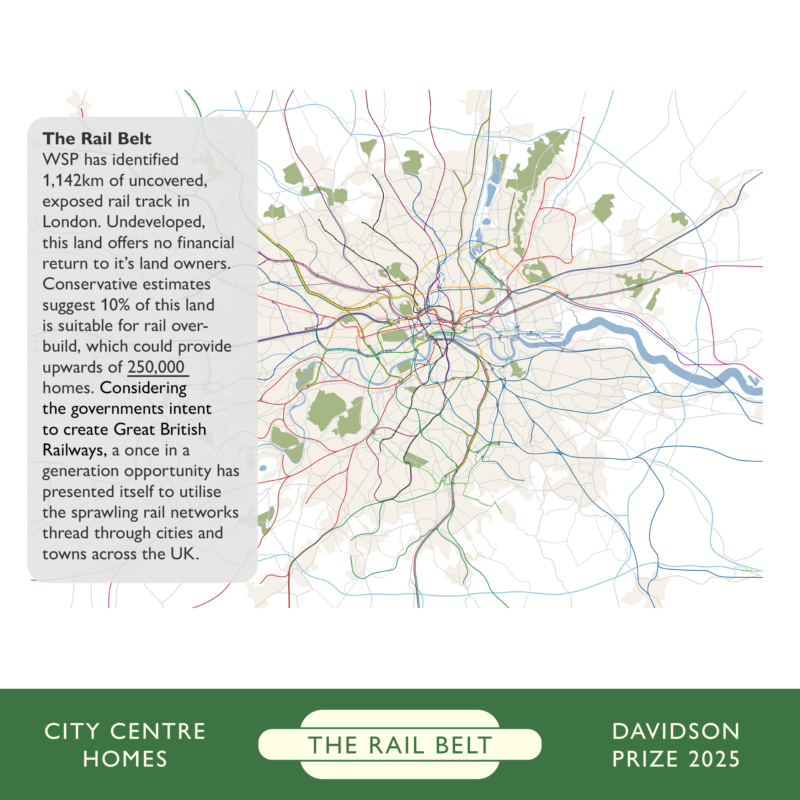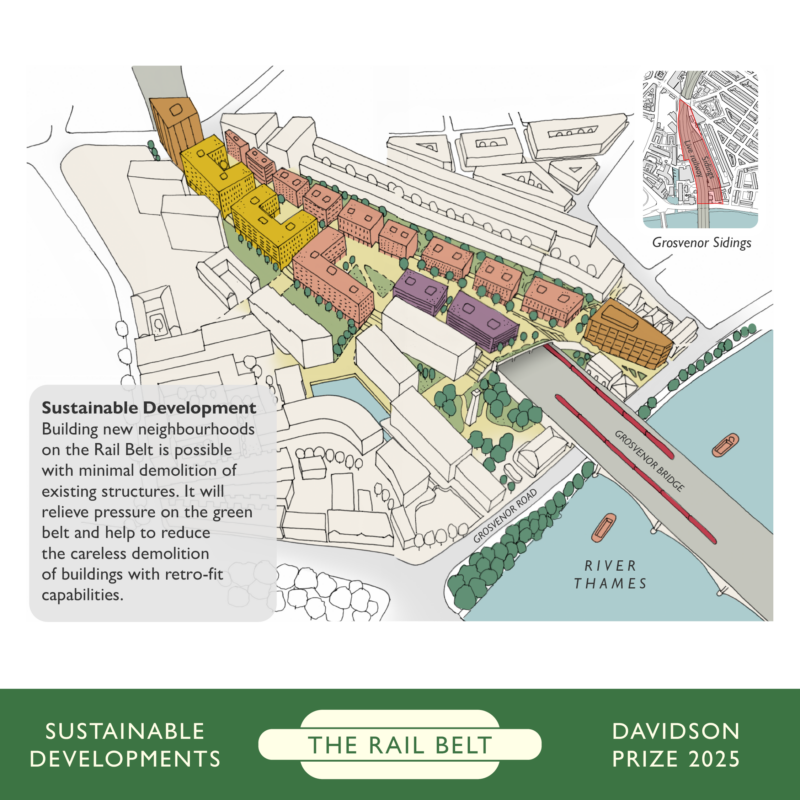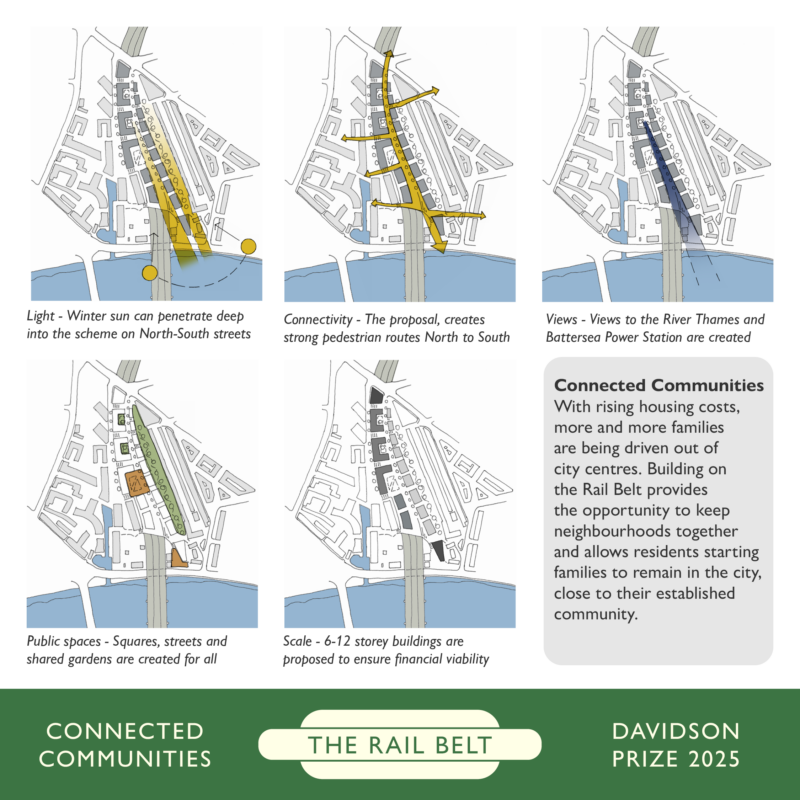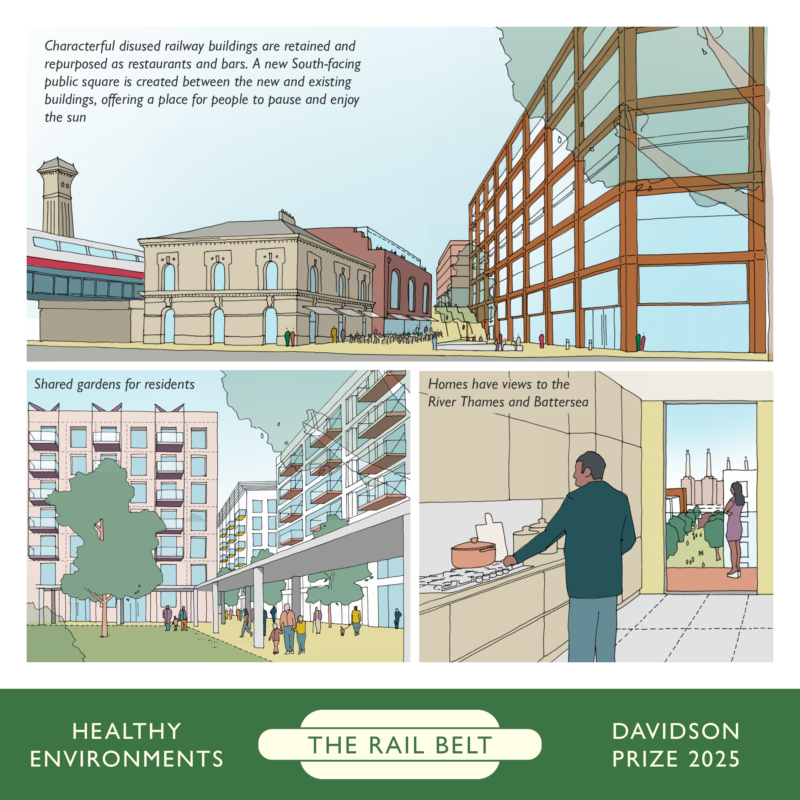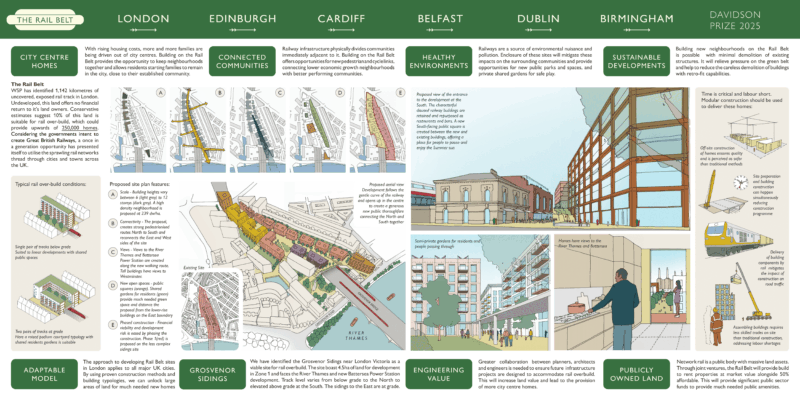
The Rail Belt
James Waddington with Nathaniel Welham and WSP
House prices in city centres are increasing fast and land values are at a premium. Many residents feel the need to leave their homes and well established communities to pay the rent or begin families. Communities should not have to break up.
The government is so concerned about housing supply that they are considering drastic measures such as building on green belt land to provide the 1.5 million homes required to house the UK’s population. This is an immediate threat to the UK’s climate goals.
Rail infrastructure is a costly but necessary commodity for a modern well-functioning society, however it eats up significant areas of land, often in highly desirable city centre areas. Rail connects people over long distance yet divides communities in the immediate vicinity. People living nearby are subject to pollution and environmental nuisance.
To address this year’s theme, our team proposes building on the Rail Belt. WSP engineers have identified 1,142km of uncovered, exposed track in London which could be built over. This land currently provides no financial return to its’ land owners. However, through the use of joint ventures between developers, Network Rail and other rail stakeholders, significant capital could be invested to provide long term financial returns on these untapped assets. Importantly, this strategy requires limited to no demolition of existing buildings, or building on the green belt.
The Rail Belt has the potential to boost the public finances, stitch divided communities back together, reduce environmental pollution in the city, and most importantly, provide approximately 250,000 new homes in London alone.
James Waddington, Architect
Nathaniel Welham, Architect - Housing Specialist
WSP
Andrew Dickenson, Engineer - Rail Overbuild Expert
